

Exploring our past to sort out myth from reality
Share this Page on
Facebook or Twitter

These are the voyages of the TimeShip Anachron.
Our Mission: To boldly explore the past, dispelling
mythinformation and mythconceptions
of American History along the way.
.
 Visit us on Facebook
Visit us on Facebook
Meet MythAmerica Series

Pt 1 Pt 2 Pt 3 Pt 4 Pt 5 Pt6 Pt7 Pt8 Pt9
Not So Fabulous Fifties,
Title
Meet MythAmerica Series

Pt 1 Pt 2 Pt 3 Pt 4 Pt 5 Pt 6 Pt 7 Pt 8
Not So Fabulous Fifties, Part 8
No Room in the Motor Inn
For many Baby Boomers, one of the most vivid parts of their nostalgia for what they remember as the Fabulous Fifties is Summer Vacation. More particularly—summer road trip vacations.
The 1950s and early 1960s were the heyday of the Family Road Trip Vacation. I’m pretty sure that the craze didn’t just start on its own…it was fed by the advertising industry (no doubt in cahoots with the hotel/motel/restaurant/gift shop/tourist trap industry!)
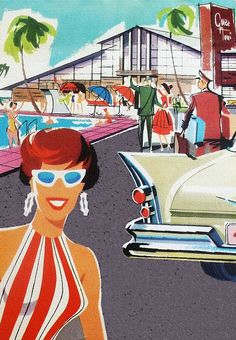
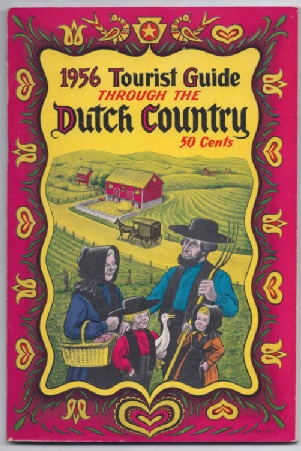
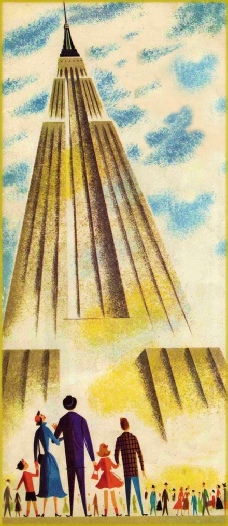
Families would pile into their convertible or station wagon or sedan and head off down the highway, perhaps to see a national park, or historical sites like Tombstone, Arizona or Gettysburg, PA, or maybe even Disneyland. Or at least to visit extended family in another state.
My family did both—our ultimate vacation destination was always to stay for a week with my Uncle Merle and his family, or with my maternal grandparents. (Dad was a mailman, and managed to schedule a vacation in winter most years, and I did well enough in school to be allowed to take off two weeks at a time during the school year.) But along the way from our home in Michigan, we’d get to see lots of the country. Uncle Merle was in the Navy, and wherever he was stationed became one of our destinations. Those included New London, CT (we saw Gettysburg and New York City along the way), Key West, FL (we saw Daytona Beach and Miami along the way), and Washington, DC.
My grandparents were snowbirds from Michigan, so some winters we got to go to Ft. Myers, FL to visit them, seeing lots of Crocodile Farms and Monkey Jungles…and the Weeki Wachee Spring mermaids …along the way.
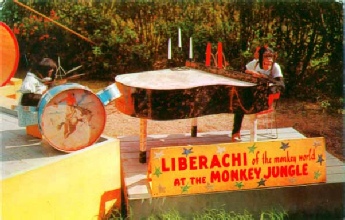
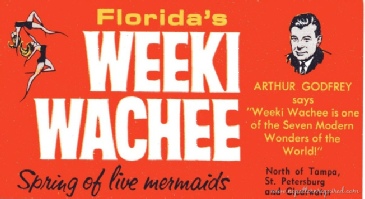
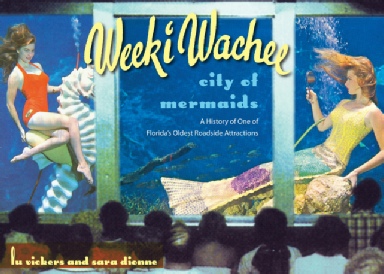
One time, when they tried out Tucson, AZ for their winter getaway, we got to see much of Texas (visiting Ciudad Juarez across the border) and visit western ghost towns and tourist traps in Arizona—I remember seeing Boot Hill, and “panning for gold.”
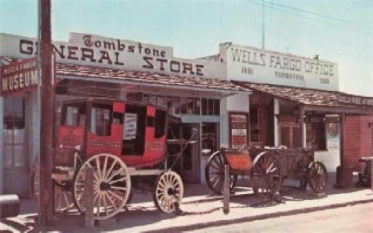
Nowadays I plan a trip by “asking” Googlemaps.com for a route from where I am to where I want to go to help make arrangements for motels and other stops along the way. Once my family gets in the car, we then rely on our GPS to talk us through every turn in our trip.
But of course Google and GPS gadgets didn’t exist in the ‘50s. From very early on, my parents and I made good use of the books and maps of the AAA. Tourism representatives for that organization would “custom make” for you mapping tools for your trip. They would plan the most efficient route from your home to your destination, and mark it out on a US map by hand with a magic marker.
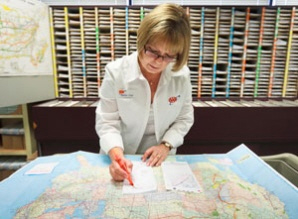
Then they would pull together a “Trip Tik” of the whole route. The Trip Tik was a spiral bound set of small maps of limited stretches of road along your route. These would also be marked with the magic marker to avoid any confusion at all of exactly where a turn was to be made. The Trip Tik also included detailed information on where to find gas stations, restaurants, rest areas, and more.
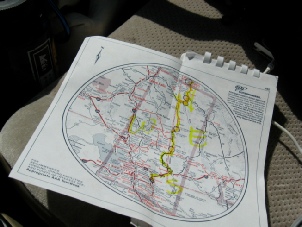
And then the tour representative would also provide you with “Tour Books” … state and regional guide books giving details of restaurants, lodging, sights to see, and more pin-
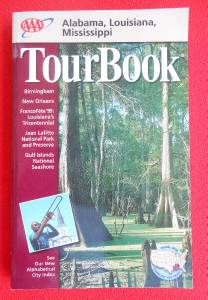
So even without an Internet hookup and GPS, you were pretty well-
Yes, the pics below look pretty much like our family did in the summers of the Fabulous Fifties, relaxed, happy, and confident headed out on the road.
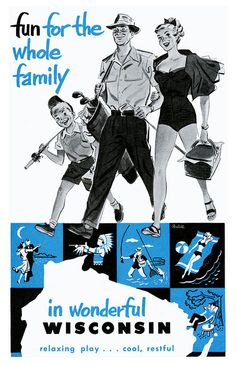
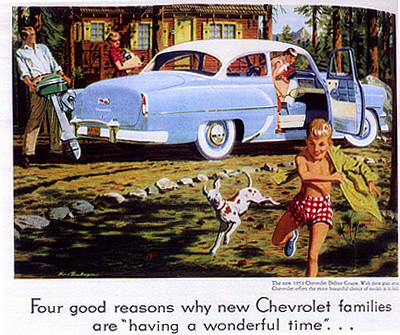
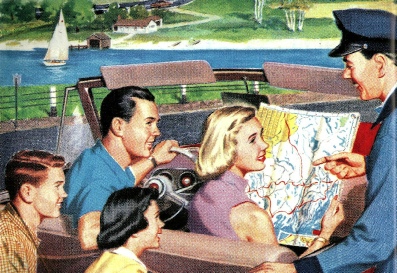
If a children’s book was written about our travels, it would have looked pretty much like this.
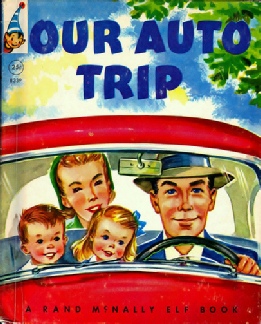
But I recently discovered a children’s book about family travel in the 1950s that shook my nostalgia for the fabulousness of the era.
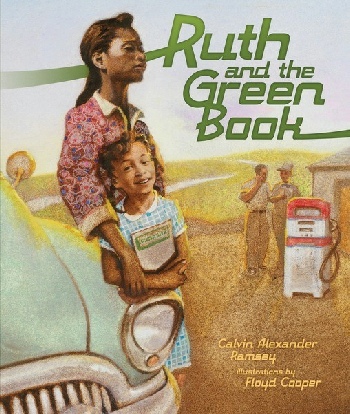
Young Ruth is excited about going on a trip in her family’s new car -
In Tennessee, Ruth is happy when her daddy’s friend, Eddy, welcomes them to his home. There they spend the night. The next morning, Ruth overhears Eddy warning her parents about Jim Crow and what they might encounter as they drive further south. When he sees Ruth is worried, Eddy reassures her and tells her to look out for Esso service stations because her family will be welcome there.
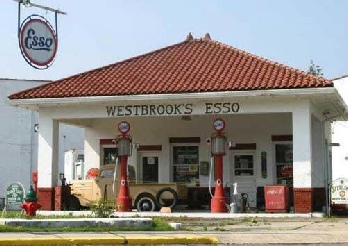
(The ESSO company was the only major fuel corporation that actually solicited Negro franchisees across the nation, and they advertised in the Green Book.)
After her father explains to Ruth that Jim Crow isn’t a person but “a bunch of ugly laws forbidding blacks and whites from mixing in any way,” Ruth reflects, “It hurt my feelings to be so unwelcome.”
When they come to an Esso station, the attendant tells Ruth and her parents about The Negro Motorist Green Book, which “lists places in lots of states where we would be welcome to sleep, eat, shop, get a haircut -
There continue to be ups and downs on the trip, but Ruth’s parents put her in charge of the Green Book, and with the Green Book and the helpful African Americans they meet on the way, the trip continues. The night before arriving at her grandmother’s, Ruth thinks about the bad and scary things that have happened -
I live now in Savannah, Georgia. As I look around me today at the local WalMart or Walgreens, or doctor’s or dentist’s office, and see people my own age…but with darker skin…I now realize that inside their heads they may well have a totally different view of Family Vacations in the Fabulous Fifties than my own. I had long understood that “Baby Boomer Blacks” throughout BOTH the Deep South and much of the rest of the country lived in segregated neighborhoods in segregated towns in the 1950s, and many had to use “colored only” drinking fountains and theater sections, and sit “in the back of the bus.” But at least when in their own home territory they had a support group, and knew where they could and couldn’t go to eat and shop. And could go to the safe haven of their own home when problems arose.
But it had never dawned on me that when out on the “open road” they were at an extreme disadvantage for just about anything, from finding a meal or a restroom to getting a car repaired. And a AAA Tour Guide would have done them no good. It did NOT provide any information about segregation in America. For families like Ruth’s, Dinah Shore’s invitation rang pretty hollow.
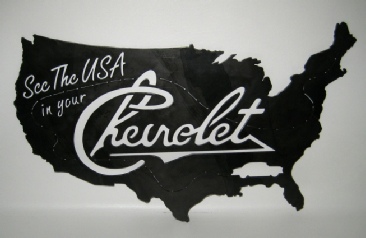
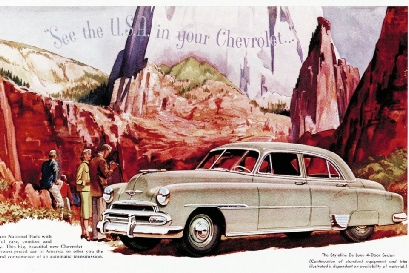
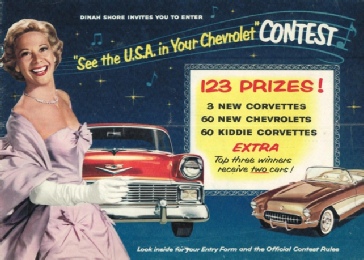
“See the USA in your Chevrolet, America is asking you to call…
Drive your Chevrolet through the USA,
America’s the greatest land of all…”
It was almost as if…they lived in a totally different America than I, in an Alternate Universe occupying the same space!
Until long after the Civil Rights era (1955-
In a bitter commentary published in 1947, the National Association for the Advancement of Colored People (NAACP) magazine, The Crisis, highlighted the uphill struggle blacks faced in undertaking recreational travel: “Would a Negro like to pursue a little happiness at a theater, a beach, pool, hotel, restaurant, on a train, plane, or ship, a golf course, summer or winter resort? Would he like to stop overnight at a tourist camp while he motors about his native land ‘Seeing America First’? Well, just let him try!”
Racist laws, discriminatory social codes, segregated commercial facilities, racial profiling by police, and the existence of “sundown towns” made road journeys a minefield of constant uncertainty and risk. The difficulties of travel for black Americans were such that, as Lester B. Granger of the National Urban League puts it, “so far as travel is concerned, Negroes are America’s last pioneers.”
Businesses across the United States refused to serve African-
Diners and restaurants also rejected blacks, and even travel essentials such as gasoline could be unavailable because of discrimination at gas stations. To avoid such problems on long trips, African-
There would be no restaurant for us to stop at until we were well out of the South, so we took our restaurant right in the car with us... Stopping for gas and to use the bathroom took careful planning. Uncle Otis had made this trip before, and he knew which places along the way offered ‘colored’ bathrooms and which were better just to pass on by. Our map was marked and our route was planned that way, by the distances between service stations where it would be safe for us to stop.”
Finding accommodation was one of the greatest challenges faced by black travelers. Not only did many hotels, motels, and boarding houses refuse to serve black customers, but thousands of towns across America declared themselves “sundown towns” which all non-
Even in towns which did not exclude overnight stays by blacks, accommodations were often very limited. Only six percent of the more than 100 motels that lined U.S. Route 66 in Albuquerque, New Mexico, admitted black customers. Only three motels in New Hampshire served African-
May I remind you that New Hampshire is NOT in “the Deep South”!
Yes, the Green Book was a lifesaver in many ways.

Green wasn’t just the color. It was named after the book’s author — Victor Green — who was a postal worker. Most African Americans were familiar with where they could and couldn’t go in their own cities. So Green used his connections through the post office to collect lists from all over America, and even some other countries. These lists were invaluable to Black travelers.
Even in the depth of Jim Crow, however, Green dreamed of a better time. In the introduction he wrote:
There will be a day sometime in the near future when this guide will not have to be published. That is when we as a race will have equal rights and privileges in the United States.
His dream, I suppose, sort of did and sort of didn’t come true. [Source]
Although we all know now that it took a lot of sacrifice and facing danger by people in the Civil Rights movement to force the change that eventually came, it is interesting to look behind the scenes and see one other factor that factored into the equation…
Although President Eisenhower was not eager to enter the civil rights debate, he was confronted with a Cold War diplomatic reason for involvement…:
At the outset of his administration, Eisenhower’s United Nations representative clearly warned him that America’s notorious racist practices amounted to a “diplomatic Achilles’ heel.” While Washington ceaselessly sought support from new and third world member states against Soviet-
This would be a growing problem as Europe’s colonial governments in Africa were overturned. Africans were increasingly part of the diplomatic corps that traveled around the United States.
One diplomatic incident, which occurred in the spring of 1961 shortly after President Eisenhower left office, illustrates the type of embarrassment Packard cited. William Fitzjohn, charge d’affaires for the Republic of Sierre Leone in west Africa, drove from Washington to Pittsburgh for a lecture. When his driver stopped at a Howard Johnson’s restaurant in Hagerstown, Maryland, they were both refused service because of their color. Appalled by reports of the snub, President John F. Kennedy invited Fitzjohn to the White House. The president of Howard Johnson’s apologized, while Hagerstown Mayor Winslow F. Burhans invited him to a dinner with the city’s leading citizens.
Soon, however, another incident occurred. On June 26, 1961, Ambassador Adam Malick of the Republic of Chad in northcentral Africa was driving to Washington on U.S. 40 to present his credentials to President Kennedy when he was refused service after stopping in Edgewood for a meal.
By one count, nine such incidents involving diplomats occurred in 1961 alone. In a 2005 column, Frederick N. Rasmussen of The Baltimore Sun recalled the Governor’s reaction:
While Maryland Gov. J. Millard Tawes apologized for the incidents, he also suggested that African diplomats traveling U.S. 40 should pick restaurants with an open-
U.S. 40, then the major route for diplomats traveling between New York and Washington, fittingly became the target of Kennedy’s efforts in ending the practice of denying service not only to black diplomats but African-
He asked Maryland civic leaders to extend “voluntary cooperation for an immediate end to segregation in restaurants and other places of public service.”
. . . Restaurant and café owners along U.S. 40 were slow to move, believing it was their right to serve, or withhold service from, whomever they pleased.
“Frankly, I can’t afford it,” said Mrs. Charles Krell, owner of the Suburban Inn near Aberdeen. “I’d lose all of my white customers.” [Source]
One of the most iconic representatives of the (white) great memories of travel of the 50s and early 60s was the famous Route 66.
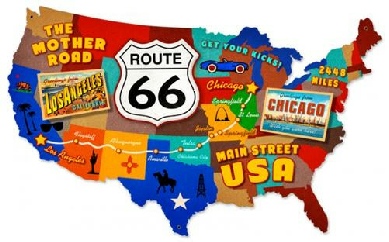
U.S. Route 66 (US 66 or Route 66), also known as the Will Rogers Highway and colloquially known as the Main Street of America or the Mother Road, was one of the original highways within the U.S. Highway System. Route 66 was established on November 11, 1926—with road signs erected the following year.[2] The highway, which became one of the most famous roads in America, originally ran from Chicago, Illinois, through Missouri, Kansas, Oklahoma, Texas, New Mexico, and Arizona before ending at Santa Monica, California, covering a total of 2,448 miles (3,940 km).[3] It was recognized in popular culture by both the hit song “(Get Your Kicks on) Route 66” and the Route 66 television show in the 1960s. [Source]
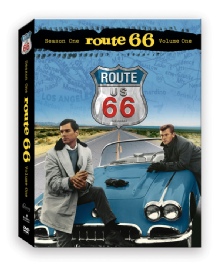
There is a large subculture, represented on the Internet, of Route 66 aficionados, who collect memorabilia about the heyday of this icon.
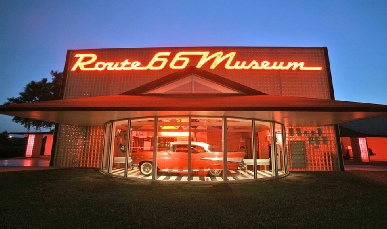
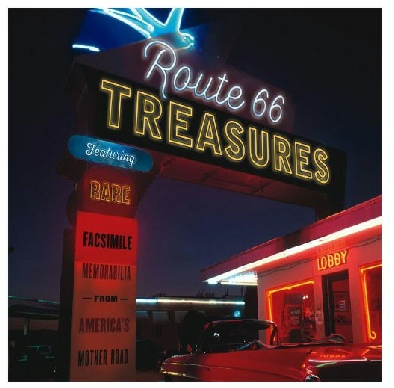
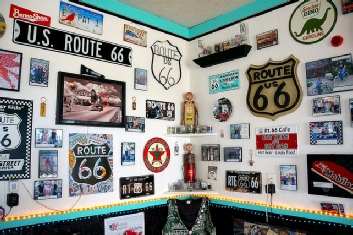
There are also lots of books filled with pics and trivia about the road. One of the best is this one.
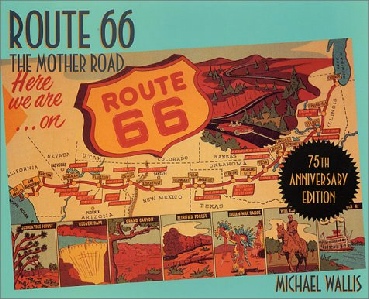
Regarding the author, Michael Wallis—he was a consultant for the Disney film Cars…
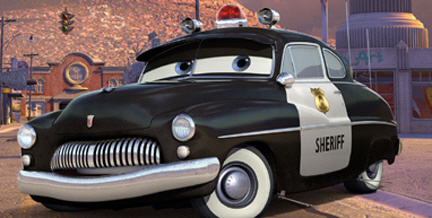
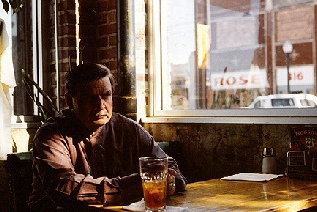
The Sheriff is portrayed by the distinctive baritone voice of Michael Wallis, who also served as a Route 66 consultant for the film. Wallis has written 14 books, including the bestselling “Route 66: The Mother Road”, which catapulted him to national prominence in 1990. Wallis also guided the Pixar crew on two Route 66 tours for its research for “Cars,” and he and his wife, Suzanne, wrote “The Art of Cars,” a behind-
While looking up information on this material about the Green Book, I found a fascinating recent article by Wallis titled, “The Other Mother Road.”
Wallis first describes a bit of his own childhood:
Come back with me to June of 1952. It most definitely was another time, another place. I was seven years old, and I recall neighbors in their backyards searching the night sky for flying saucers. Newspapers offered the latest reports on labor strife and atomic tests. The Korean conflict raged. Threat of a polio epidemic gripped the land. Out of Wisconsin, a vitriolic Senator Joe McCarthy, blinded by rancor and fear, prepared for his insidious Communist witch-
Despite the discord and apprehension, all was right with the world if you happened to be me—a kid growing up in Missouri within easy striking distance of Route 66.
Although Harry Truman was not running for another term of office, our family was proud that the Show Me State’s favorite son was still president of the United States. Down at our neighborhood theater, my band of friends felt Gary Cooper was worth every penny of admission portraying the stoic lawman in High Noon. Our television favorites included I Love Lucy, The Ernie Kovacs Show, and The Adventures of Ozzie and Harriet. We never failed to miss Dragnet, the cop show starring Jack Webb as the poker-
After some more of that kind of nostalgia, he brings in the importance to his youth of his family’s summer vacation travels:
Out in the garage, my dad packed suitcases, thermos bottles, ice chests, road maps, ball gloves, fishing gear, and all the essentials needed to keep a family going for two whole weeks. Finally, Dad had his pride and joy—the shiny green Plymouth he calledthe “Green Monster”—loaded and ready… It was time for us to take to the open road.
The Route 66 story is both bitter and sweet. A microcosm of the nation, the old road has plenty of scar tissue.
Just the act of “getting there” was an important part of our vacation experience. We did not want to lose a single moment so we made the drive an indispensable component of the overall trip. There was an assortment of manmade and natural attractions to visit, tourist traps to survive, detours to avoid, and truck stop meals to consume.
… Soon Dad had the entire family out on U. S. Route 66. We cranked down the windows. Black-
The voices of Peggy Lee, Eddie Fisher, Teresa Brewer, and Hank Williams poured from the radio. The Mother Road beckoned. I dreamed of reptile farms, Indian artifacts, and outlaw hideouts that waited down the highway. My mouth watered for cheeseburger platters and thick chocolate malts. The fantasy had begun. My hunger for the road and all that lay ahead grew with each passing mile.
He paints his nostalgia picture very effectively. And then he takes an unexpected turn for a man whose career has long been mostly about evoking happy memories of the Good Old Days.
Maybe you have similar memories.
We tend to look back through rose-
Now, of course, I know the cold, hard truth. Now I realize those days were not really so good; I only remember them that way. The main reason many of us considered those times the Good Old Days is simple. It comes down to technology. People didn’t know what was happening everywhere in the country and the world. They were uninformed for the most part, especially in rural America. There was no 24-
You cannot restore myths or turn back the clock to a dream that only existed for certain Americans. To live solely in the past is to live in complete denial.
Perhaps the good old days aren’t good; they are just old. The old wisdom-
Wow. Them’s strong words!
I’ve been writing similar words for quite a while now, and every time I do, I seem to step on toes. Even friends tell me I ought to “leave the past alone” because bringing up any unpleasant truth about the American Narrative is somehow “unpatriotic.” I’m pleased to see that Michael Wallis agrees with me that it most certainly is NOT.
Back then, not only in the Jim Crow Deep South, but also everywhere in the land—including Oklahoma—if you were a person of color, you lived in another America. One that had no dreams. No hope. You could not eat in the same building or shop in the same store as white folks. You could not get gasoline from a white-
Many of us who have an abiding interest in Route 66 realize that because the highway is arguably the most famous roadway in the nation, and perhaps the world, we have an obligation to share the entire story of the old highway we love.
In the main, today’s astonishing revival of interest in the Mother Road has overlooked the inequities and the negative history that certainly transpired along the road’s shoulders and continues in some ways to this day.
There is ample reason to question the romanticizing of Route 66. There also is reason to stop avoiding that dark side of the highway story that all too often has been swept beneath the proverbial and convenient carpet.
Remember that this highway—our highway—is a true mirror of the nation. Like all roads, this road and what takes place on this road reflects our society and culture. Now that includes the good, the bad, the ugly, the holy, the shades of gray, and the truth of life. That has always been the case. That has always been a fact. That will never change.
Wallis writes of the Dust Bowl refugees who also went down Route 66 trying to find the Promised Land in California, and the prejudice they endured and abuse they received, as seen in Steinbeck’s book Grapes of Wrath, and heard in the songs of Woody Guthrie in the 30s.
But Woody was lucky. Even when he was down and out and busted like the folks he sang about, at least he was the right color. Ironically, only a few years later, the late great Nat King Cole, the man with the velvet voice that helped immortalize the highway by singing Bobby Troup’s “Get Your Kicks,” found that out. Like millions of African Americans, Hispanics, American Indians and others, Cole for way too long would not be able to check into even a modest tourist court or dine in a greasy spoon on the Mother Road or any other road in this country.
… Black families traveling America’s byways packed their own food and often slept in their vehicles. They didn’t get their kicks on Route 66—or at least the kind of kicks I was getting as a youngster or a few years later as a hitchhiking Marine. At highway stops such as the Rock Cafe in Stroud, Oklahoma, during the ‘30s, ‘40s, ‘50s, and into the ‘60s, black travelers went to the backdoor to get their food to go. None of them walked inside.
…To many white, middle-
And then he writes about the Green Book
…Starting in 1936 and every year after until 1964, when the Civil Rights Act rendered it obsolete, that straightforward guide helped African Americans travel throughout the country in a safe and comfortable manner. A Harlem postal worker and activist named Victor H. Green published it. He named it The Negro Motorist Green Book. Some folks called it the Negro Travelers’ Green Book, but it was mostly known as The Green Book. Every cover bore a quotation from Mark Twain: “Travel is fatal to prejudice.”
… In 1955, for example, 3,500 white motels would allow dogs to stay in guest rooms, but less than 50 stated they would even consider housing any black travelers.
… There are several reports that in 1961 so many black tourists along Route 66 in Illinois were refused restaurant service that they took to bringing their own food and eating in their cars rather than chance being embarrassed. Undoubtedly, that accounts for why most editions of the Green Book listed nothing between Chicago and Springfield as well as nothing between Springfield and East St. Louis. There were also large gaps for Missouri, Texas, and New Mexico.
And Wallis’s conclusion of the matter…
Perhaps the good days aren’t good; they are just old.
And I would add, perhaps the Fifties weren’t all that Fabulous…it’s just that our rose-
Nothing wrong with a Baby Boomer hanging on to his or her memories of fabulous experiences from that time, or of music or movies they really, really still think were fabulous. But those things don't “define” the era for everyone. I’ll bet Annette Funicello was having a Fabulous 50s life when this 1957 picture was taken, and in later years looked back on the time with fondness.
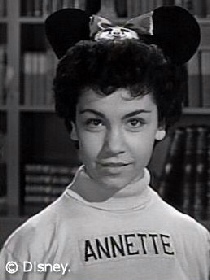
But Elizabeth Eckford’s memories of that same year were likely not so fabulous.
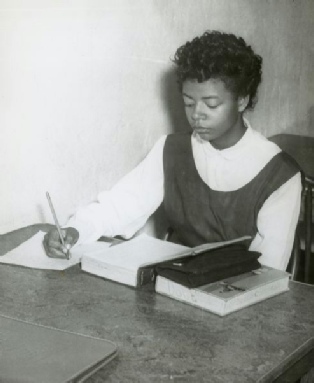
You see, she was one of the nine students who took part in the forced integration of Little Rock High School in 1957, as seen in this famous photo.
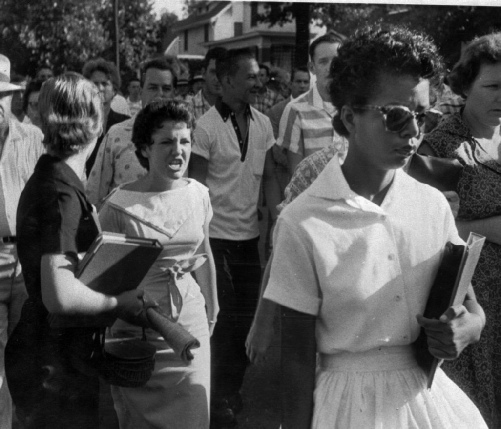
She and the other eight students were "accompanied" by the 101st US Airborne Division sent by President Eisenhower to protect them from the enraged crowds attempting to stand against integration in Arkansas.
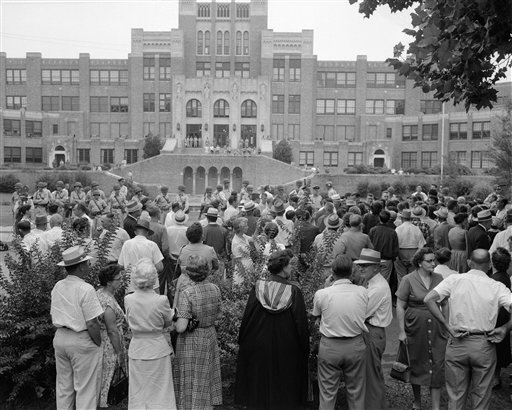
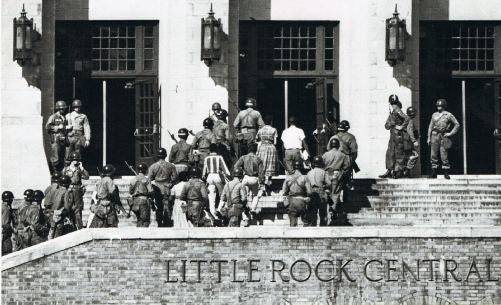
As Elizabeth later wrote of that day, “I tried to see a friendly face somewhere in the crowd—someone who maybe could help. I looked into the face of an old woman and it seemed a kind face, but when I looked at her again, she spat on me.”
No, the Fifties weren't Fabulous for everyone.
Frankly, I am glad to be alive in America now, fifty years later. I wouldn’t have the slightest desire to “go back” to “the way it was” in the 1950s.
Are there problems still waiting to be solved in 21st century America? Indeed there are.
But they deserve fresh solutions,
not a fruitless desire to turn back the clock to
a Time That Never Really Was.